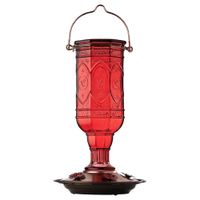Where to place a hummingbird feeder in your backyard – 5 essential tips
Create a wildlife-friendly feeding station for these beautiful birds


Putting out hummingbird feeders is a great way to give these wondrous creatures a helping hand, while feeling closer to nature and bringing more color and life to your outdoor space.
To ensure your feeder is as inviting as possible, positioning is important. Whether you're offering homemade hummingbird food or shop-bought nectar, such as Kaytee's hummingbird food from Amazon, these are the key things to bear in mind.
More Birds Red Glass Hummingbird Feeder | $24.87 from Amazon
The five flower-shaped feeding ports and red hue of this glass feeder will help to attract plenty of hummingbirds to your yard. Plus, it looks super stylish hanging from a branch or hook.
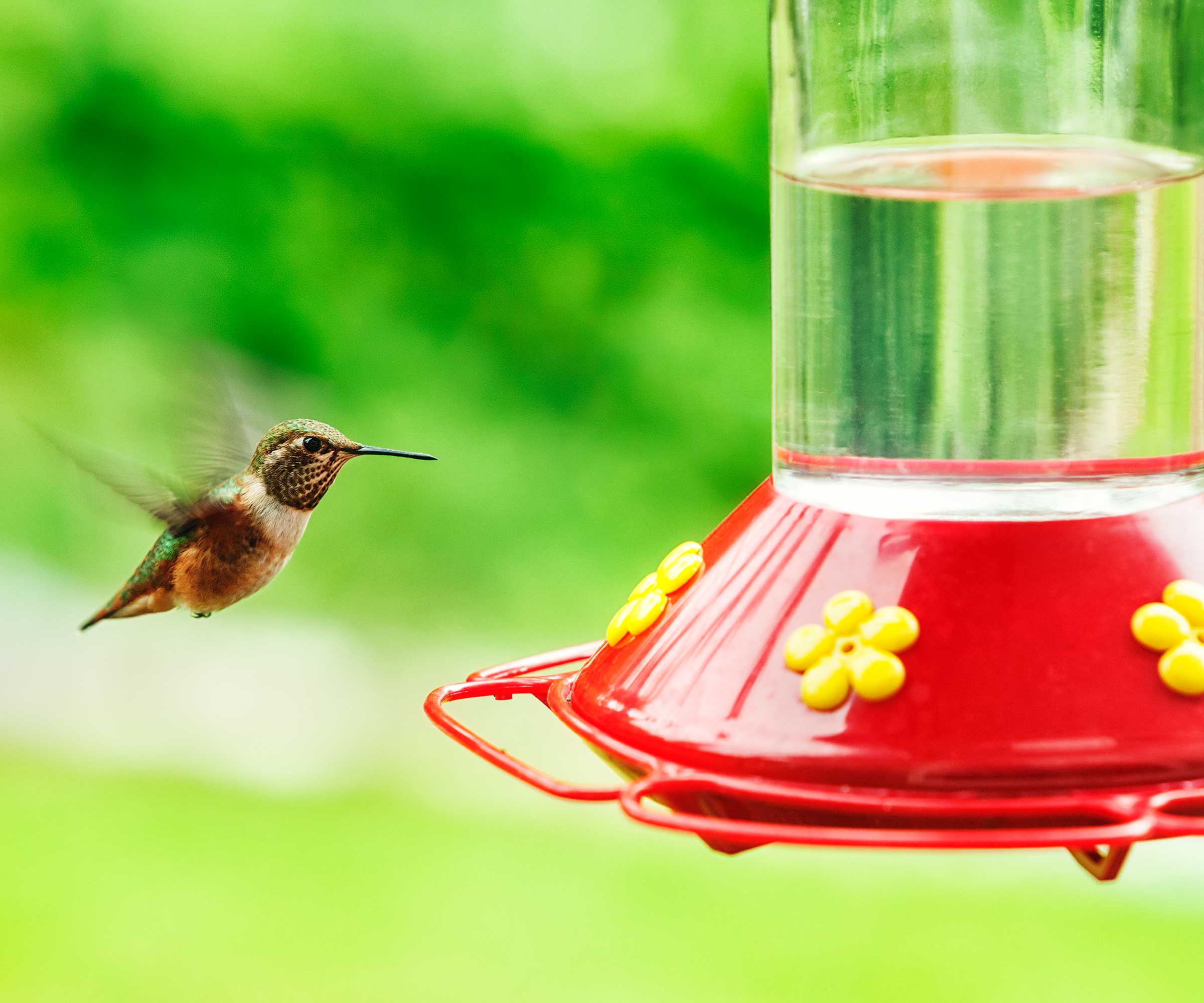
Welcome these small creatures to your plot
5 quick tips to remember when positioning your hummingbird feeder
Attract hummingbirds to your yard with these easy tips.
1. Place it within arm's reach for easy maintenance
'To keep hummers healthier, or at least avoid contributing to poor health, the feeder and nectar must be fresh and mold-free,' says Tammy Poppie, an expert from OnTheFeeder.com.
'Nectar needs to be refreshed every few days (more often in extreme heat),' Tammy continues. And the hummingbird feeders themselves need to be cleaned frequently. 'Even if you don't visually see mold, it is often still present.'
So, to enable you to maintain the feeder and nectar regularly, the ideal spot should be easy for you to reach.

More than 25 years ago, Tammy hung her first bird feeder outside her kitchen window. Since then, she learned how to attract wild birds to enjoy them and observe their behaviors. Today, Tammy shares her passion for backyard birdwatching at OnTheFeeder.com where she inspires others to experience the magic of birds up close.
2. Hang it somewhere shaded
Direct sunlight will encourage faster fermentation of your hummingbird food and the growth of mold. So, Tammy recommends placing your feeder somewhere that is shaded for half of the day or more to slow down the effects.
This will keep the nectar fresher for longer, and will attract more hummingbirds overall, she says. Try beneath an awning on the edge of a porch or under the canopy of a garden tree.
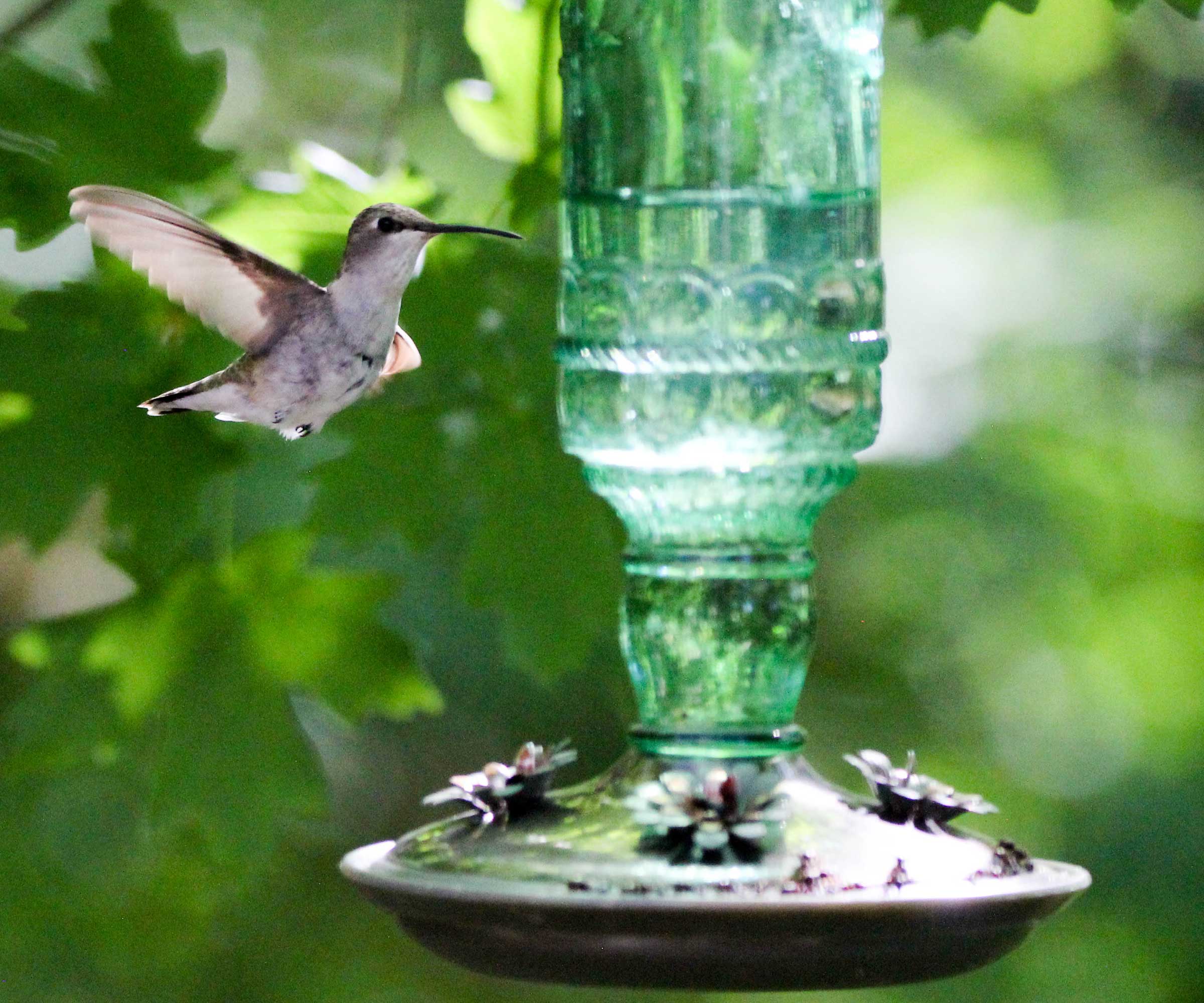
Keep hummingbird food fresher for longer by placing feeders out of the sun
3. Provide nearby cover
Placing your feeders within 10-15ft of shrubs and trees will mean the birds have a safe place to shelter should any predators come along. It also gives them a shaded space to perch and rest their wings.
Just ensure there's enough space directly around the feeder for them to maneuver.
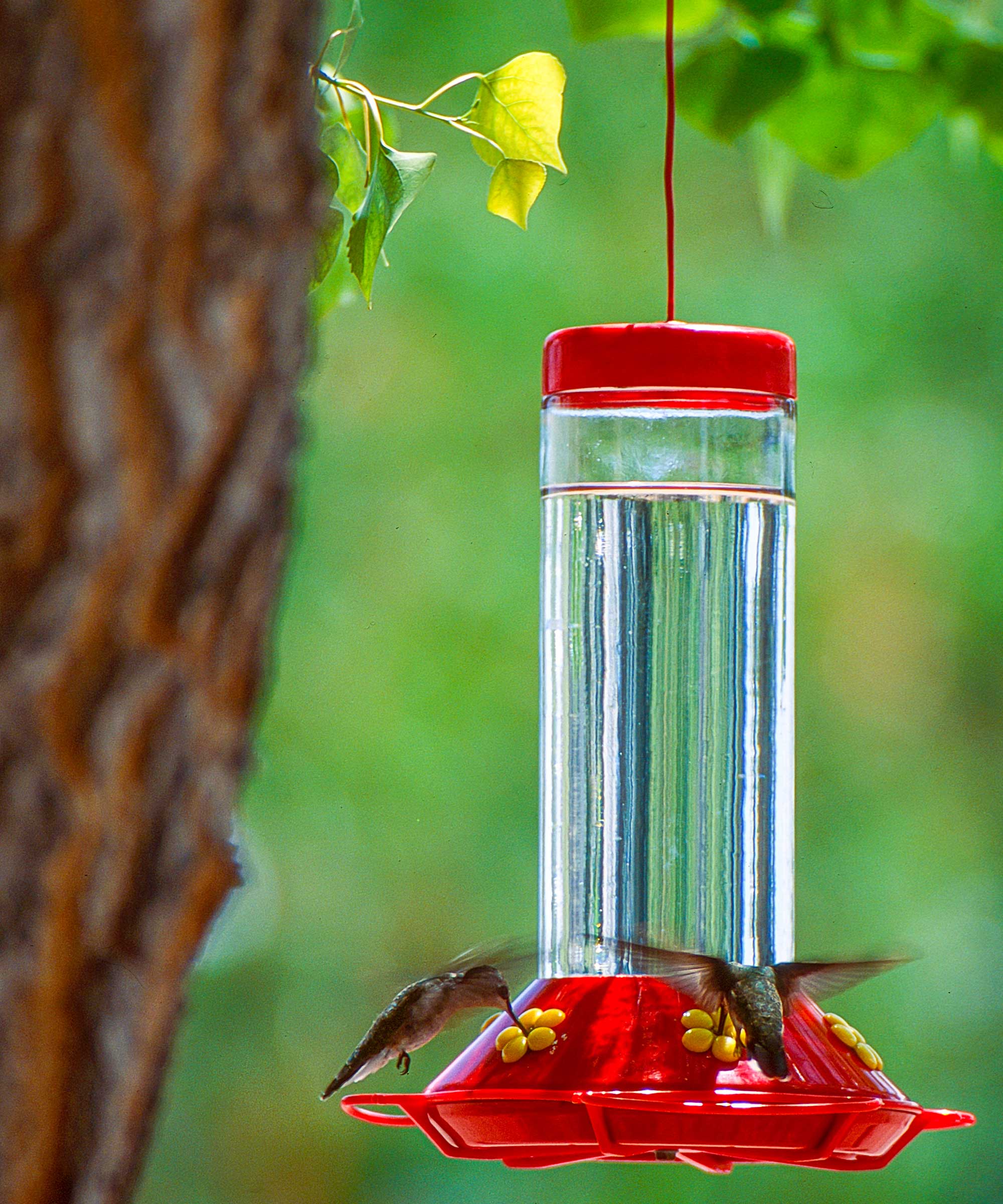
A tree can provide shelter
4. Keep it away from other bird feeders
Allow these small creatures their own area of your backyard so that they can feast in peace, safely away from the threat of seed-feeding wild birds.
If you have the space, it's also a good idea to hang more than one hummingbird feeder relatively closely together. This will lessen the risk of the birds acting territorially and aggressively toward one another.
5. Make sure you can enjoy the view
Part of the joy of feeding these feathered friends is watching them flit to and fro. So, when you put out your hummingbird feeder, you'll want to hang it somewhere you can see it – either from your patio or perhaps your kitchen window.
As is the case when placing any bird feeder, avoid placing it too close to a window, though, as this can encourage injuries.
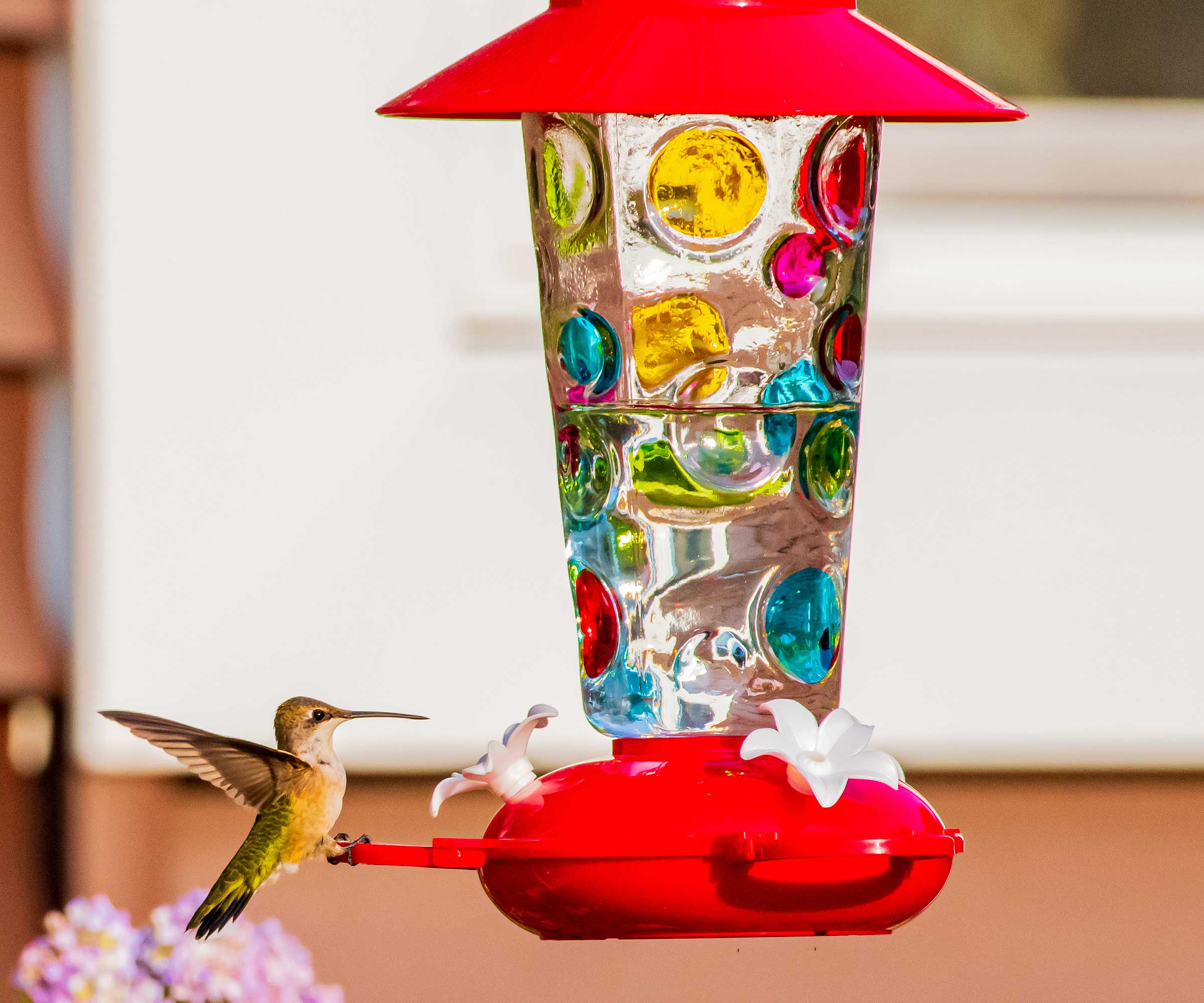
Hummingbirds are a joy to watch
Bear these simple tips in mind and your feeder will be more inviting for birds and easier to maintain for you – not to mention more enjoyable to watch. And if you want to boost the numbers of these adorable creatures in your yard even further, why not consider growing plants that attract hummingbirds in nearby containers and flower beds, too?
Sign up to the Homes & Gardens newsletter
Design expertise in your inbox – from inspiring decorating ideas and beautiful celebrity homes to practical gardening advice and shopping round-ups.

Holly started writing about gardening five years ago, and she is a regular contributor to Homes & Gardens. She has also written many gardening features for Woman & Home and Real Homes, too. She has previous experience as a professional gardener, where she helped to plant and maintain private gardens. Holly has also looked after allotment plots over the years and loves to grow her own flowers and veggies from seed. In her spare time, she enjoys visiting local gardens, botanical drawing, and tending to her ever-growing collection of houseplants.
-
 Ina Garten's storage pantry is an insightful window into all of the best cookware used by the chef – and it's easy to recreate on your kitchen shelves from $48
Ina Garten's storage pantry is an insightful window into all of the best cookware used by the chef – and it's easy to recreate on your kitchen shelves from $48The beautiful dishware in The Barefoot Contessa's Hamptons pantry showcases the tools she uses most often to cook – this is exactly how you replicate it
By Sophie Edwards Published
-
 Extend the lifespan of your appliance with 5 simple but crucial washing machine maintenance tips
Extend the lifespan of your appliance with 5 simple but crucial washing machine maintenance tipsFrom cleaning the filters to keeping the door open, experts reveal the washer tips they swear by
By Andy van Terheyden Published
